Overclocking
The card can be overclocked quite well, but in the end fails at the power limit of 100 watts with a stable achievable 2085 MHz in the warmed-up state very close to the 2.1 GHz hurdle. This would have required either more boost steps, for which cooling is no longer sufficient, or higher voltages, which Nvidia does not allow. In the short term, you can also get clock rates above 2.1 GHz in the cold state, but only in the cold state. From this point of view, this is probably the maximum value of what is really possible in practice.
Temperature gradients and normal boost cycle in detail
The cooler of the MSI GTX 1650 Gaming X honors its name. It keeps the card cool enough. After all, 60 to 61 °C in open construction and maximum 62 to 63 °C in the closed housing are now nothing to worry about. The beat plays really well, because as we know, the power target of the smaller chip is on that of the bigger card. The 1950 M Hz after 30 minutes full load is really good and fixed enough for this small card.
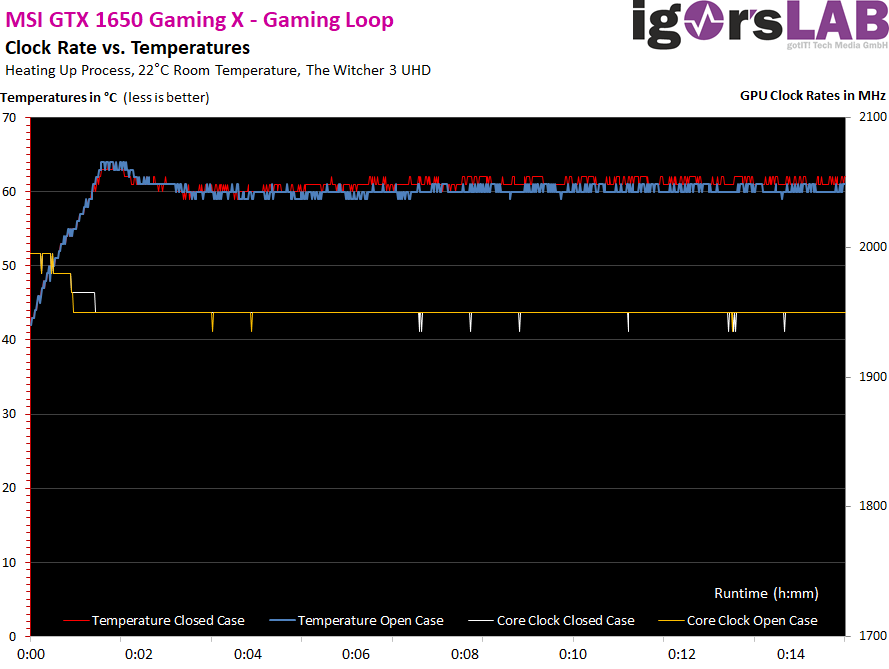
During the stress test, the clock rates hardly break down, which is also due to the comparatively high power target:
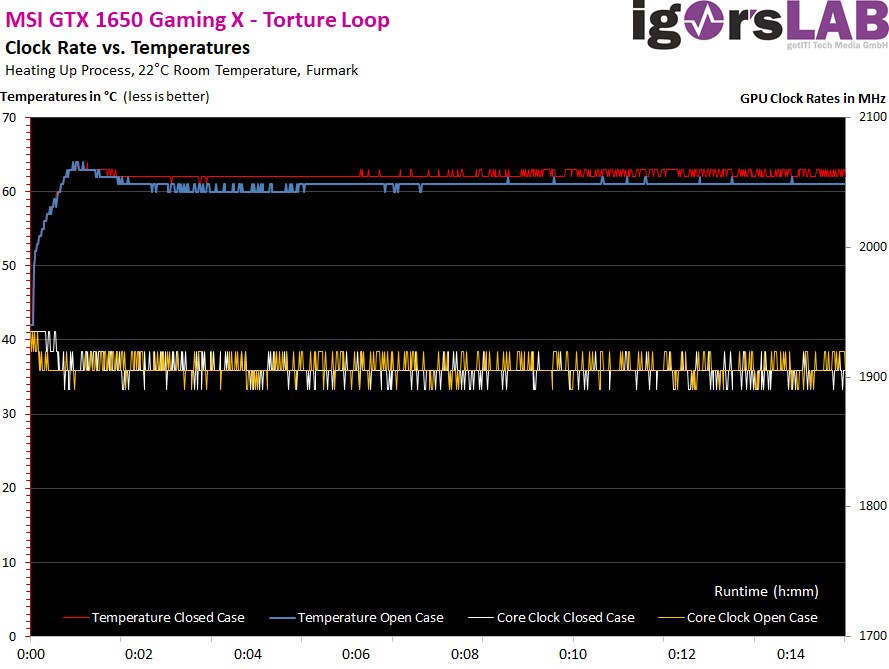
And now the whole thing again in sober numbers in table form:
| Initial MSI GeForce GTX 1650 Gaming X (Ventus X) |
Final value MSI GeForce GTX 1650 Gaming X (Ventus X) |
|
|---|---|---|
| Open Benchtable | ||
| GPU Temperatures |
40 °C | 60 to 61 °C |
| GPU clock | 2025 MHz | 1950 MHz |
| Ambient temperature | 22 °C | 22 °C |
| Closed Case | ||
| GPU Temperatures |
41 °C | 62 to 63 °C |
| GPU clock | 2025 MHz | 1950 MHz |
| Air temperature in the housing | 24 °C | 38 °C |
Board Analysis: Infrared Images
The following infrared images show the gaming and torture loops in the open structure and in the closed housing. The differences are hardly visible and the cooler acts very confidently. Of course, the measured almost 78 watts are not something that could not be cooled down with a wet finger and a gesture of nonchalance. The GPU's voltage converters, although uncooled, remain below 76°C and the warmest memory module is 55°C.
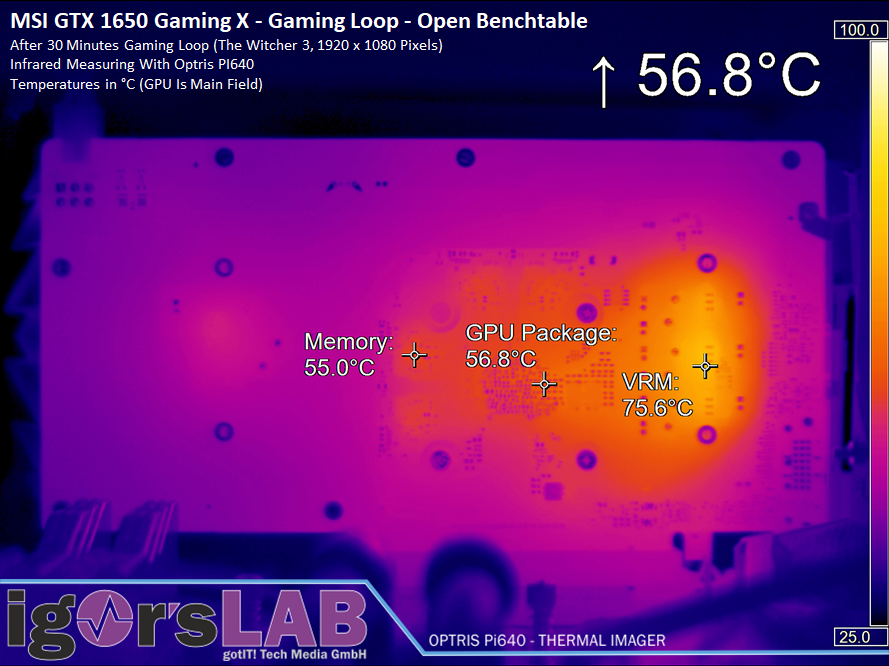
In the closed case, the drama remains, the card hardly lays. One degree more you can do it, it doesn't change the really solid overall picture.
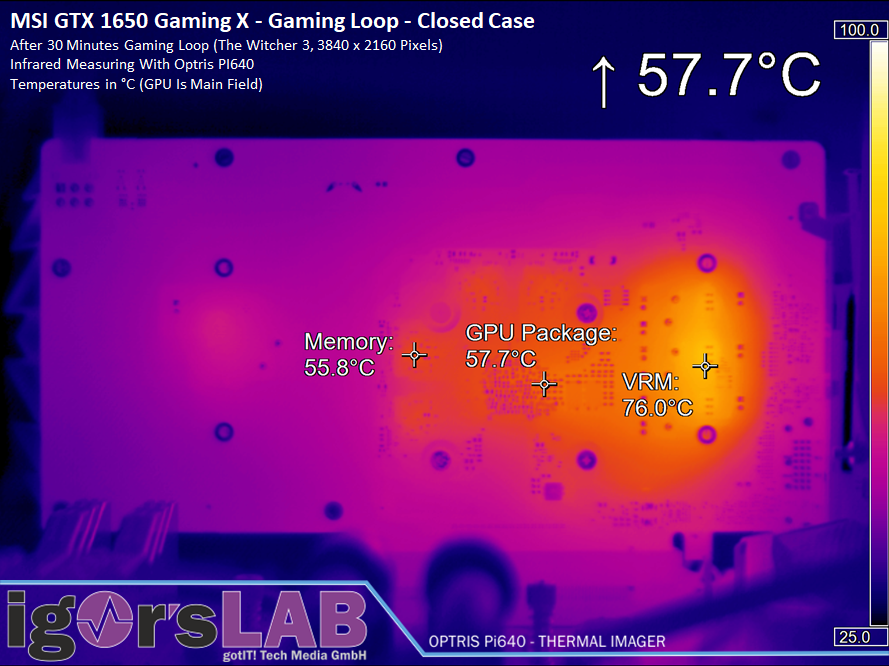
The stress test produces a very similar picture, whether it's a gaming or torture loop. Memory increases by 5 degrees in open build-up compared to gaming, GPU by one degree, and GPU voltage converters by up to three degrees. That, too, is still profound.
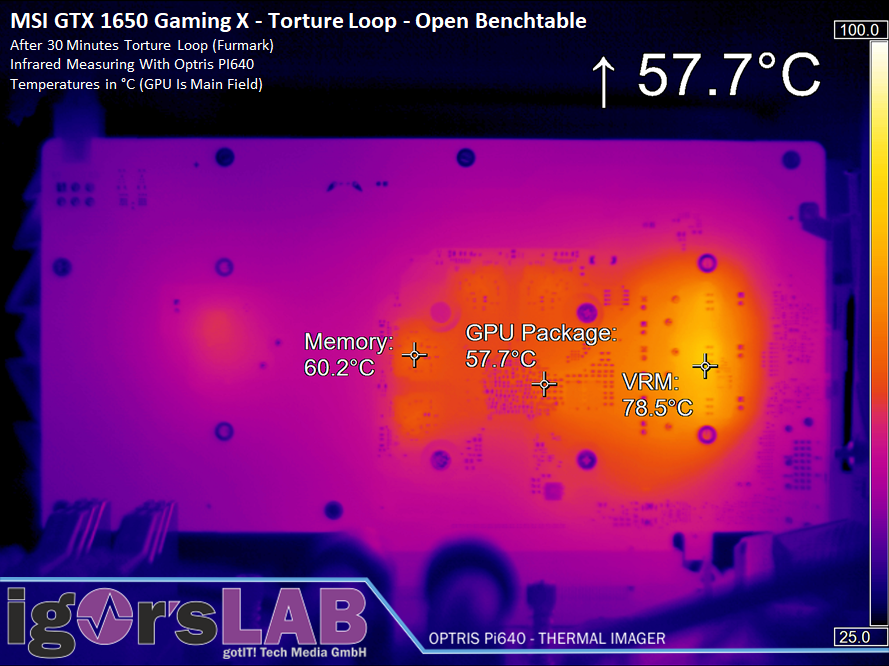
In the closed housing, on average, one to two degrees come up again, nothing more.
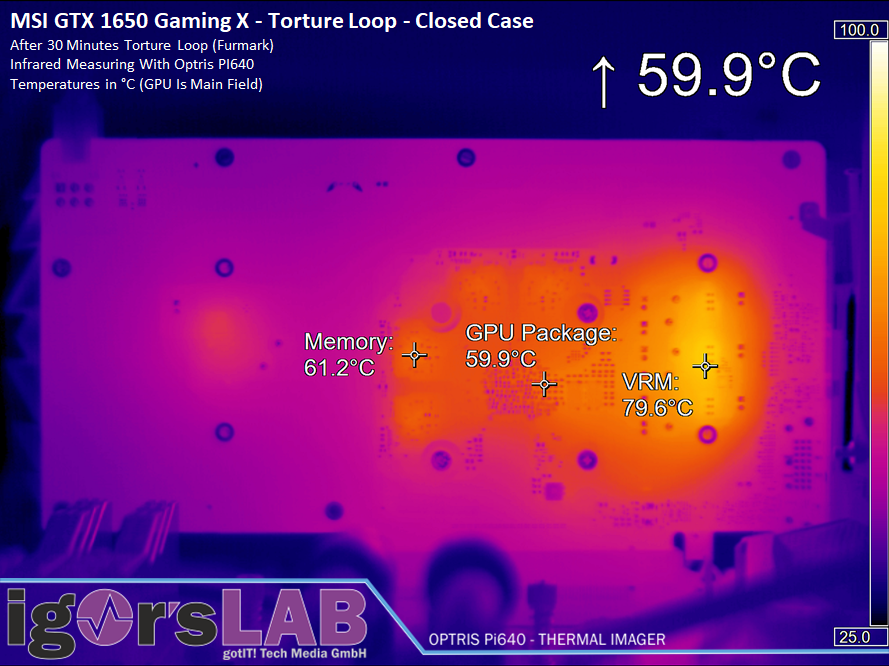
- 1 - Einführung, Unboxing, Chip-Details und Testsystem
- 2 - Tear Down: Platinen- und Kühleranalyse
- 3 - Ashes of the Singularity
- 4 - Battlefield V
- 5 - Destiny 2
- 6 - The Division 2
- 7 - Far Cry 5
- 8 - Forza Horizon 4
- 9 - Ghost Recon
- 10 - Grand Theft Auto V
- 11 - Metro Last Light
- 12 - Shadow of the Tomb Raider
- 13 - The Witcher 3
- 14 - Wolfenstein II
- 15 - Leistungsaufnahme und Netzteilempfehlung
- 16 - OC, Taktraten, Temperatur, Infrarot
- 17 - Lüfter und Lautstärke
- 18 - Zusammenfassung und Fazit
































Kommentieren